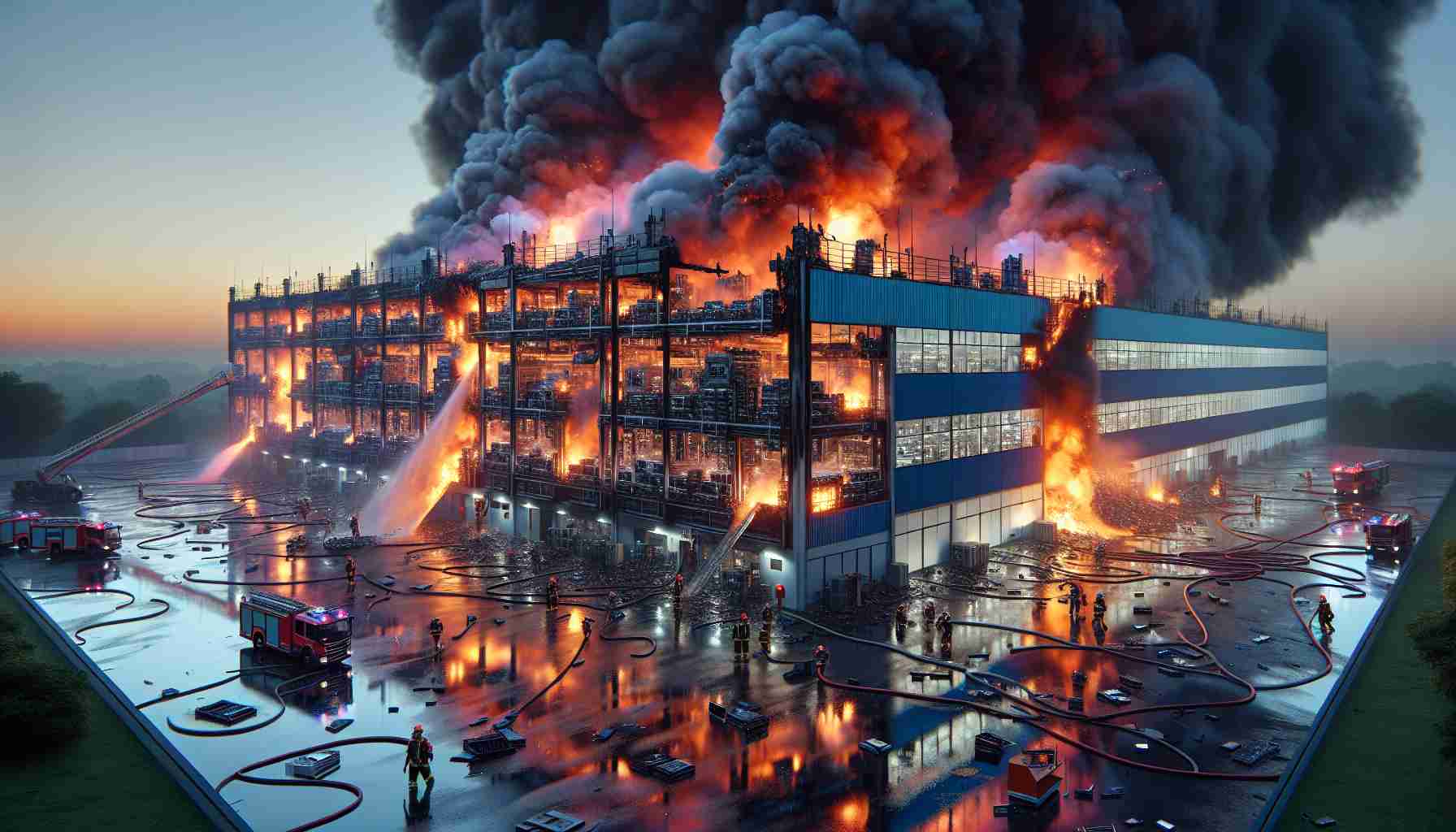A significant fire incident occurred at a factory in Tamil Nadu, which specializes in producing components for Apple’s iPhone. The blaze ignited in a chemical storage area, leading to the collapse of one building. Fortunately, no injuries were reported, thanks in part to the factory’s effective emergency protocols that ensured all employees were evacuated safely.
As a result of the fire, production activities were halted, and approximately 1,500 workers present during the incident were sent home. Over ten firefighting and rescue vehicles were dispatched to manage the flames. Tata Electronics, one of the major contract manufacturers for iPhones in India, announced its intent to investigate the cause of the fire and pledged to implement necessary measures to protect its employees and stakeholders.
Local industrial safety officials noted that access to the site was blocked, complicating the assessment of damages. It was reported that the fire involved chemicals used in processing components, with some iPhone parts being manufactured at the affected site. Meanwhile, the status of a nearby facility, slated to commence smartphone production later this year, remains uncertain.
Authorities are actively looking into the fire’s origins while safety assessments will be carried out once access to the area is permitted. Apple has yet to release a statement regarding the incident.
Safety First: Insights and Life Hacks from the Tamil Nadu Factory Fire
The recent factory fire in Tamil Nadu, which creates components for Apple’s iPhone, highlights the importance of safety protocols in industrial environments. While the incident fortunately resulted in no injuries, it serves as a reminder of the potential dangers associated with manufacturing facilities. Here are some valuable tips, life hacks, and intriguing facts related to workplace safety and emergency preparedness.
1. Establish and Practice Emergency Protocols
Every workplace should have a clear set of emergency protocols in place. Conduct regular drills so that employees know exactly what to do in case of a fire or other emergencies. Make sure everyone is aware of the evacuation routes and assembly points.
2. Importance of Chemical Safety
For workplaces using chemicals—like the factory mentioned—having comprehensive safety data sheets (SDS) and proper storage methods is crucial. Ensure that all employees are trained in how to handle these substances to minimize risks.
3. Regular Maintenance and Inspections
Conduct regular inspections of equipment and facilities to identify potential hazards. Routine maintenance can prevent malfunctions that might lead to accidents such as fires.
4. Invest in Quality Safety Gear
Ensure that the proper safety gear is available and that employees know how to use it. This includes fire extinguishers, personal protective equipment (PPE), and first aid kits. Tailor your safety gear to the specific risks present in your workplace.
5. Keep Emergency Contacts Handy
Have a list of emergency contacts prominently displayed, including local fire departments, safety personnel, and medical facilities. This will help streamline communication in the event of an emergency.
6. Learn from Others
Investigate other incidents in similar industries to understand what went wrong and how to avoid similar mistakes. Companies like Tata Electronics have pledged to investigate the causes of such accidents to bolster safety measures further.
Interesting Fact: Global Safety Standards
Did you know that the International Labour Organization (ILO) estimates that over 2.78 million workers die each year from work-related accidents or diseases? This statistic underscores the necessity for effective safety practices in all workplaces.
Safety Is Everyone’s Responsibility
Ultimately, workplace safety requires a collective effort from all employees. Encourage a culture where safety is prioritized, and individuals feel empowered to voice concerns about unsafe conditions.
For more insights into workplace safety and technology trends, visit Apple’s official website. Stay safe and prepared!























